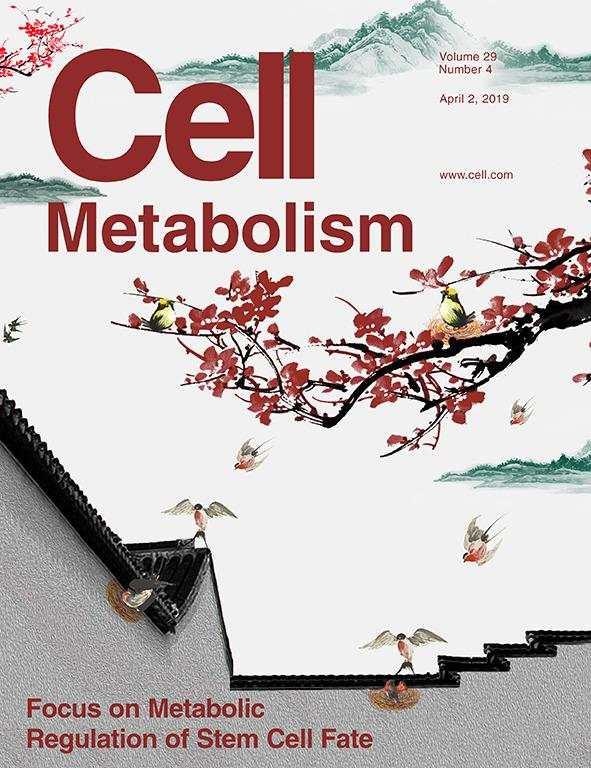|
Cell Metabolism Published Latest Collaborative Research Results of Optogenetics and Synthetic Biology Cross Research Center in Our University |
|
Cell Metabolism Published Latest Collaborative Research Results of Optogenetics and Synthetic Biology Cross Research Center in Our University On April 2, Cell Metabolism, an international top journal in the field of metabolism, published latest cooperative findings of Junke Zheng, research professor from Shanghai Jiao Tong University School of Medicine, and Yi Yang, professor in State Key Laboratory of Bioreactor Engineering as well as Optogenetics and Synthetic Biology Cross Research Center in our university, for metabolic regulation of leukemia-initiating cells (LICs) as cover article. The title is Metabolic imaging reveals a unique preference of symmetric cell division and homing of leukemia-initiating cells in an endosteal niche.
Stem cell metabolism is hot research areas in the international frontier. To break the technical bottleneck that it is difficult to monitor fine cell metabolic changes in real time, dynamically and in vivo currently, professor Yi Yang research group developed a high-performance genetically encoded fluorescent sensor SoNar (Cell Metabolism 2015, 21, 777) in the early time, with high fluorescence intensity, high sensitivity and wide dynamic range, which could detect subtle changes in various signaling pathway of energy metabolism. Research professor Junke Zheng started deep collaboration with professor Yi Yang, and studied mouse models and primary patient samples of acute monocytic leukemia which is common in clinical, of high degree of malignancy but lack of effective therapies, with SoNar labelling and indicating leukemia cell metabolism. The study established innovate leukemia cell lines metabolism imaging system based on genetically encoded metabolic sensor SoNar, revealed LICs' unique metabolic characteristics of relying on glycolysis as main energy source, and found new laws that metabolic status determines LICs key cell fates in specific bone marrow microenvironments, such as location, cell homing, symmetric division, etc. As shown in the cover, the more active migrant birds, swallows, representing more glycolytic LICs, return to the south after a long migration in early spring each year (need to be powered by glycolysis), and tend to settle under the roof (home to endosteal niches) and produce descendants. While, inactive resident birds, sparrows, possess lower levels of glycolysis and prefer to nest in a tree (home to vascular niche). This research provides not only a unique angle for understanding the relationship between metabolic regulation and its fate determination in LICs, but also a novel tool and a powerful reference for precisely discussing metabolism of different types of stem cells, and may offer potential therapies targeting leukemia or other tumors in terms of metabolism. It is reported that, in the same period of magazines, a total of 4 articles discussed the internal metabolic regulation law to regulate stem cell fate decision in physiological or pathological states. This paper was selected as the cover of the current issue reflecting the importance of the findings and its technical leading roles. It' s worth pointing out that the cell metabolism imaging techniques and optical control technology developed by the State Key Laboratory of Bioreactor Engineering as well as Optogenetics and Synthetic Biology Cross Research Center in our university have aroused wide concern across the international counterparts, and have been tracked and applied by nearly 600 international first-class institutional research groups. International counterparts published a report specially in the Nature Methods journal News and Views, highly appraised the development of series of fluorescent probes for core metabolites such as NADH and NADPH, and claimed that they will revolutionize the study of redox biology (Nature Methods 2017, 14, 671). The study was completed under the joint guidance of Junke Zheng and Yi Yang. It has been funded by National Natural Science Foundation of China, National Key Research and Development Plan, as well as Shanghai Science & Technology Commission Research Projects. |
|
East China University of Science and Technology,School of Pharmacy
130 Meilong Road, Shanghai, China, 200237 Copyright By School of Pharmacy |
